
XXV
Valcamonica
Symposium
Capo
di Ponte, September 20-26, 2013
Art
as the Source of History
Session
5: Immagini
e memoria / Sezione di
Psicoanalisi
Presence
or Possession
revealed
by Handprints
Léo DUBAL
dubal
@ archaeometry.org
The long
history of handprints (female & male) testifies for the attempt
to
control
the
environment, far more than possession, obsession of modern patriarchal
societies.
The easiness of the stencil techniques promoted negative handprints as
the most
common
metonymical
"auto-rappresentazione"
(as coined by Mathilde Vigneri) in "sheltered Rock Art".
On the other
hand, in "outdoor Rock Art" the amount of work involved in engraving
handprints
disqualified this type of metonymy to the benefit of
"whole body anthropomorphic icons".
Tagging
Negative handprints is a most frequent
figure in Rock Art.
Surprisingly, only a handful
of
them are tagging other kind of
Rock Art.
Tagging
is (according to
Wikipedia):
a way
of signing ones name anonymously
using
cheap spray-paint &
cheap stencils.
Hand-stencils are obviously cheap.
The
stencilled
hand in the cave of
Airvaux (France)
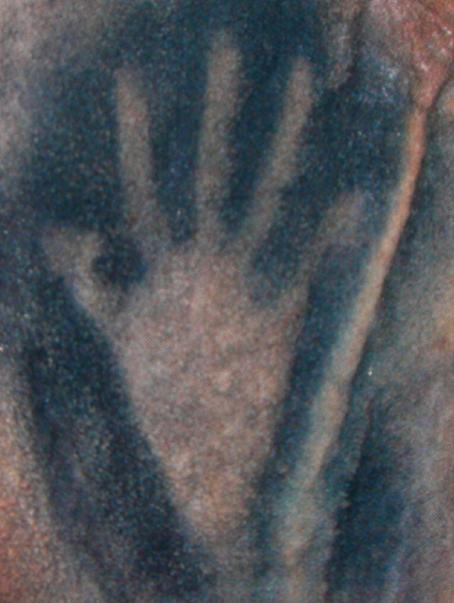
reminds us that hand tagging is a very old practice
.
Such a handprint touches us by its intimacy:
It is a physical
representations of
the tagger...male or female!
Dean R. SNOW suggests
to apply Manning's ratio:
D2/D4 to the
study of negative handprints.
Accordingly, the tagger of Airvaux might well be a
left-handed female...
What might blur gender statistics of handprints
is the fact that some taggers - right or left-handed -
might have duplicated n-times
their
handprints....
While
in
most sites only one colour has been used,
@ La Cueva de las Manos (Argentina),
sprays have been manufactured
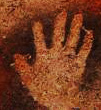

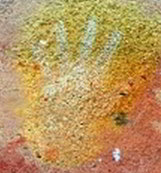
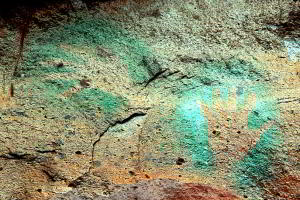
from a whole variety of pigments: black, orange, yellow,
bright green...
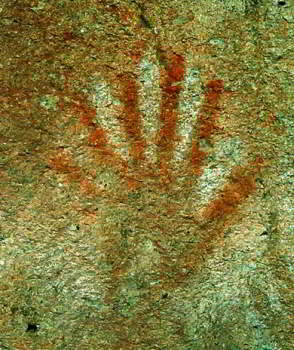
or white...with
an interesting case of sexdigitism!
The
color of the
background is
visually very important.
White spray on
red
background...
looks
very different...than on grey background or
than red spray on grey background.

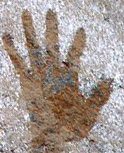
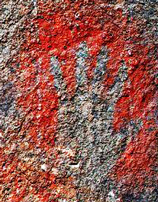
In some sites, fingers are unexpectedly short.
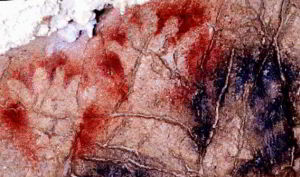
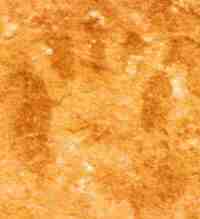
@ Gargas...should one incriminate the frost
for the missing fingertips?
But
then...why
also in Sahara, @Tassili
n Ajjers ?
André
Leroi Gourhan analyzed the frequencies of
finger
combinaisons,
i.e., three patterns
@Gargas
occuring 12, 13
& 4 times respectively.
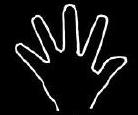
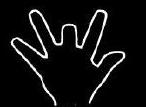

He suggested the use of a digital code...
analog to

the bushmen
hunters (Kalahari)
game code,
here:
monkey, warthog
& giraffe.
Hand
stencils...what else ?
While
hand stencils
have been intensively used in Rock Art,
and before looking into compositions with handprints,
it is instructive to review the extend of the
use of
other
flat lamellar objects as stencils.
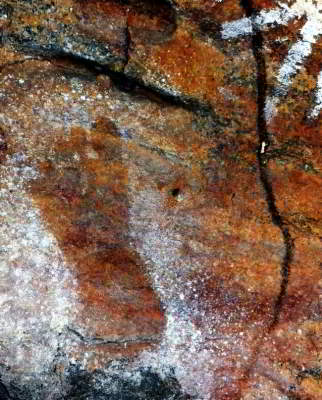
@BradyCk/Laura (NE Australia),
there is a stencilled
left footprint,
as well as @ Carnavon Gorge
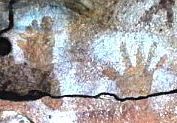
@ Mudgee (NSW Australia), a pair of
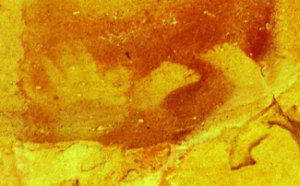
baby's footprints,
high up on a panel, has been reported.
J.L.Le Quellec,
see fig 552
of le-quellec_du-sahara-au-nil.pdf
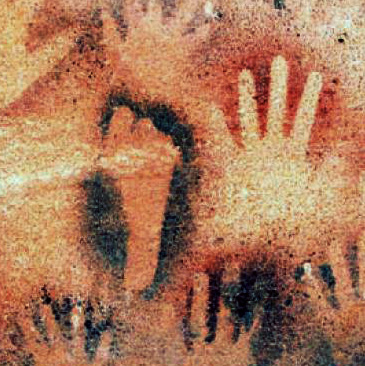

found @Wadi Sora (Sahara), right footprints
of young and adult in relation with handprints.
In contrast to the rarity of human footprint
tags,
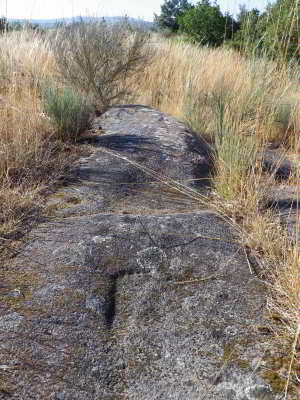
footprint engravings are common, i.e. in Galicia.
@ La Cueva de las Manos, nandu
footprints are
mixed with human handprints
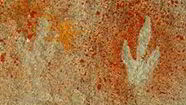

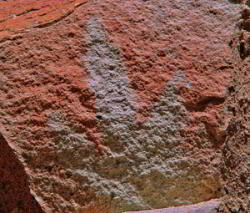
Nandu are large bipeds unable to fly...
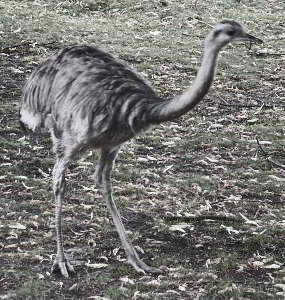
a common handicap so to speak !
In Australia, there are no nandus but emus.
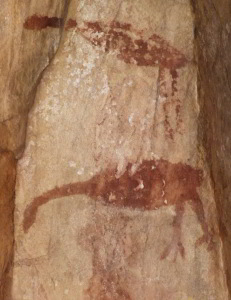
Some
are represented, i.e.: @Brady Ck Art Gallery.
Emu
footprints appear
frequently as
engravings.
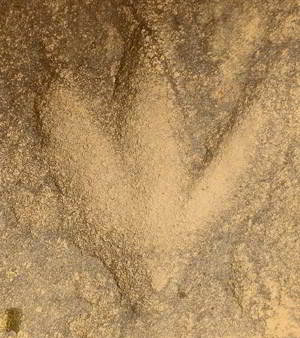
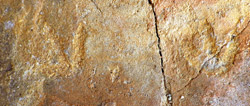
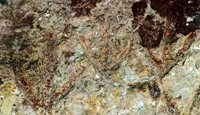
i.e.: @ sites of the Laura area.
Stencilled emu footprint are seldom:
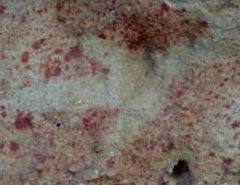
i.e.: @
Mudgee
@ Carnarvon site, Don
HITCHCOCK took great pictures
see:
http://donsmaps.com/carnarvon.html
of
stencilled kanguroo
footprints,
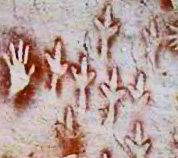
as
well as stencilled weapons:

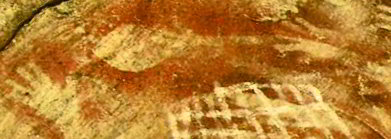
one Lil-Lil club recto-verso,
one
flat bladed wooden war club,
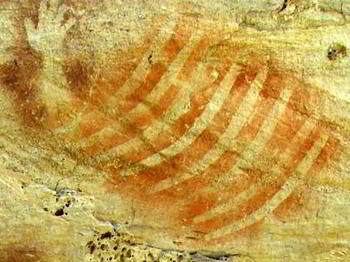
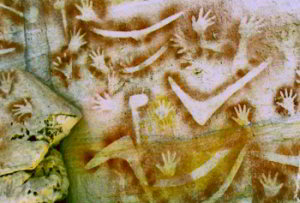
eight 1-shot
boomerangs / 3
axes & 2 V-shaped
boomerangs
and other stencilled artefacts:
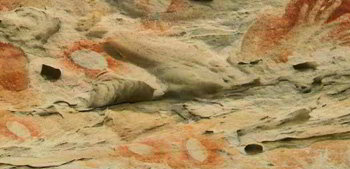
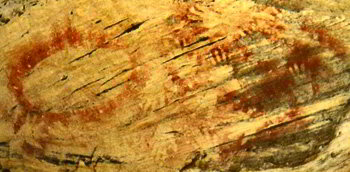
Che-Ky-Ra pendants with string / large
coolamon
@
Wadi Sora, J.L. Le QUELLEC found similar stencils of


coolamon in
association with handprints
But Australian Rock Art offers the widest range of stencils !
R.G.GUNN reports (see: 2012_stencil_masks_RAR_29-2.pdf)
,
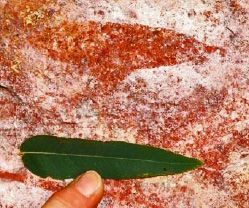
@
Jawoyn RockArt Gallery,
a stencilled leaf !
Further
kind of stencils might also have been used for RockArt,
i.e.: Virtual
stencils, such as the
profile of the shadow
of a carved
figurine (out of wood, clay or ivory?)
under a single
narrow spotlight
(a torch indoor, and the sun outdoor).
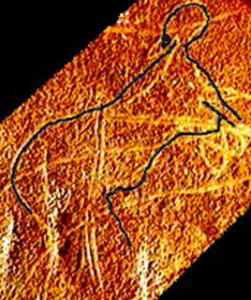
The miror-inverted profile
of the venus of Cussac
overlapps pretty well the one of Pech-Merle.
In my opinion, the use of a virtual stencil
(shadow of a
figurine recto-verso)
cannot be rule out prior to an appropriate testing.
Bertrand DAVID was the first to demonstrated with a piece
charcoal,
how easy it is to draw with a virtual stencil the profile of a
horse.
see his u-tube clip:
www.youtube.com/watch?v=f8kvxDdgDQI
Handprints by pair
@
Pech Merle, a pair of hands are riding a horse.
Is it a kind
of coded message ?
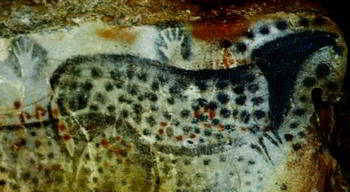
The R.D. SNOW identified the right handprint as strongly female.
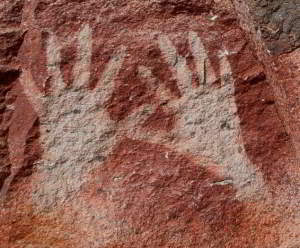
@La Cueva de las Manos, a pair of handprints
crosses its thumbs,
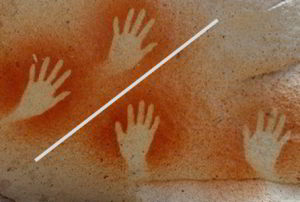
while
a duet,
symmetrically duplicated left & right hands,
are
false pairs of hands.
@
Carnarvon Gorge
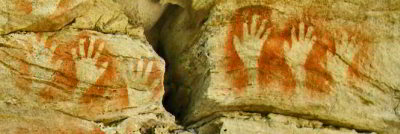
Photo:
Don HITCHCOCK
there
is even a triplet...
In
Cape York (Australia) & in Kalimatan
one faces a brain-raking
enigma.
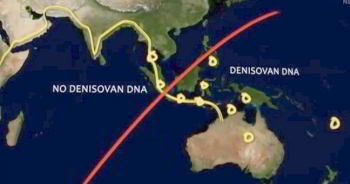
DNA
analysis suggests this geographical
area
to have hosted Homo
Denisovanis,
the recently discovered
parallell humankind.
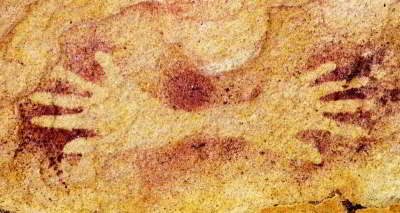
The crossed
hands @ Wallaroo Gallery suggest
the
wrists
were tied-up,
while the downwards
thumbs
may hints toward a sacrificial ritual ?
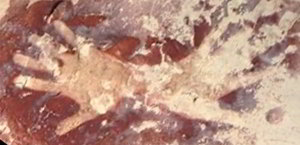
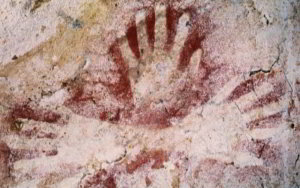
@ Gua Masri, L.-H. FAGE photographed
two similar cross-handprints compositions
see http://www.kalimanthrope.com/diaporama98/images/MA05_THU.jpg

and
also in Sulawesi Is., again in Homo Denisovanis area,
Kinez RIZA photographed those cross-handprints.
see https://youtu.be/ZVEqkVDn6Y4
They
have been recently radiodated and turned out to be
as old as the handprints of La Cueva del Castillo.
@
Carnarvon Gorge, D. HITCHCOCK photographed
cross-handprints
compositions.
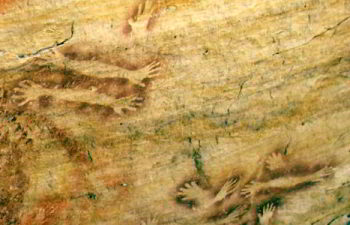

Should
one guess here that the elbows
were tied-up ?
In
the first composition,
three cross-hands are horizontal;
in the second,
two vertical. The one on the left side suggests
a weird anthropomorphic figure...
Graffiti
tagging handprints
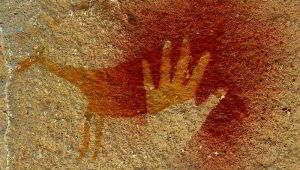
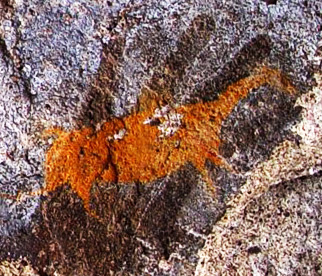
@ La Cueva
de las Manos, camelid figures
have been tagged
over handprints.
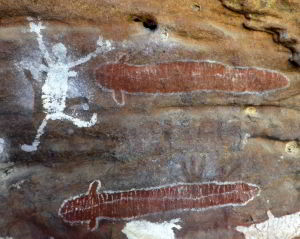
@BradyCk, a feminine figure is tagging a handprint.
The
breast of the aboriginal female is depicted according
to its
« typical contour »
as coined by Jan
Deregowski.
An
eel is also tagging an
handprint, and,
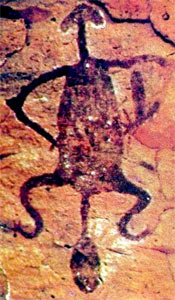
@Red Bluff, the penis
of an ithyphallic hallucinogenic creature
is also
tagging
a hand.
In
Kalimatan, scarifications,
a feature
not
transferable by stencilling,
have been tagged over the handprints!
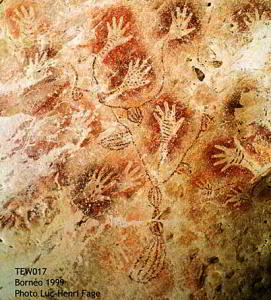
At the bottom of this most interesting composition:
the tuber of a yam-tree.
The handprints act as the leaves of
this tree of life !
Handprints
tagging ...
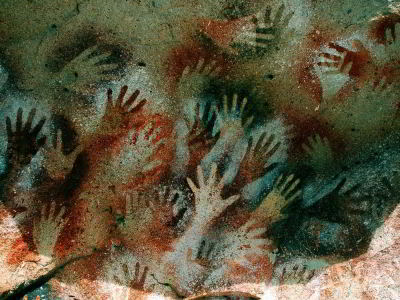
@
la Cueva de las Manos hands tagging hands
are creating a
crowd... in which
to disentangle the sequence
of
overlapping handprints
is a real brain-teaser:
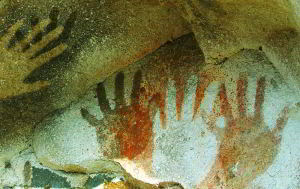
Here,
a white spray has first been
used, then
a red spray...
@ Ouadi
Sora, J.L. Le QUELLEC discovered
this exceptional composition of
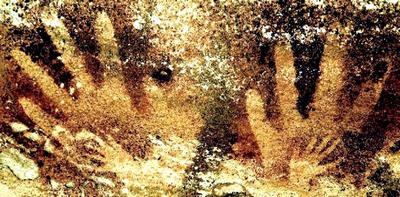
a
pair of baby hands tagging a pair of adults hands.
Now let us turn to handprints
tagging animals:.
@
Tassili n' Ajjers, the tag on the
camelid might means
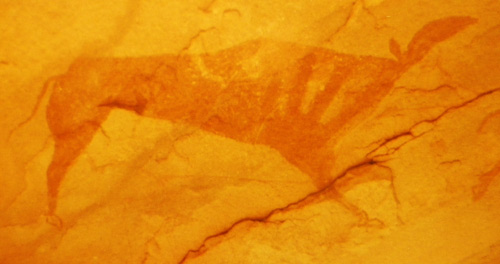
the
control over, or maybe the
possession ?
@BradyCk,
the handprints overlaying
the crocodile suggest
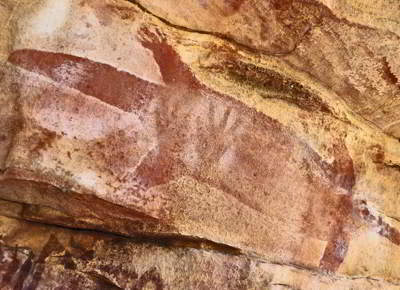
conjuring the fear away of this
dangereous reptile,
or
is it initiatic ritual?
Yes, there
exist handprints
tagging human figures !
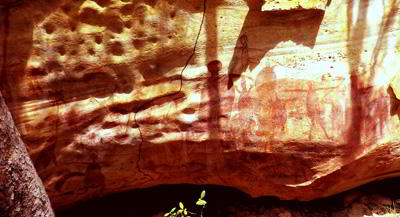
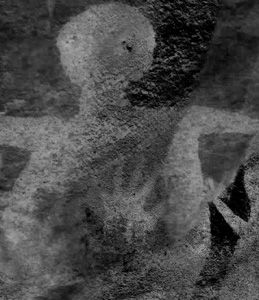
In a panel @ SandyCK/Laura, the central human
figure (male ?)
has been hand-tagged...the
handprint
appears better with enhanced contrast.
In
the same site there is an astonishing composition
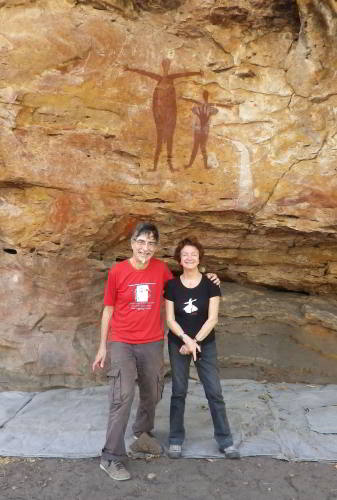
Photo: Matt TREZISE/
2012.11.07
of
handprints
tagging the breast of a female
(the D2/D4 ratio favors a
male hand)
...and
the groins
of the aboriginal
couple.
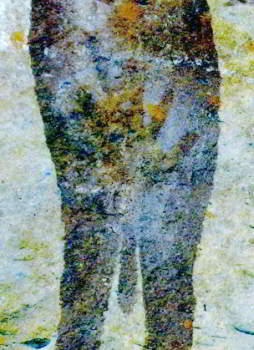
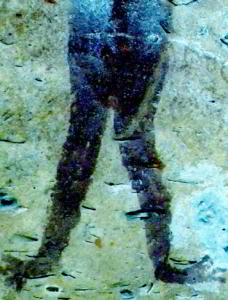
(enhanced
contrast)
This composition may hint
to an
initiatic ritual,
linked to the
magic of controlling sexual parts of the partners.
Conclusions:
1. être ou
avoir dilemna
Rock
Art negative hand printing does
not provide
obvious clues for expressions
such as
in French, mettre la
main sur...
in English “To
lay one’s
hands on”.
The very limited
occurrence of concomitant handprint tags
in Rock
Art composition
suggests that handprints were not often
(if at all) used as a
marker for
appropriation or possession.
In other words, the
compulsion
to possess ever more
might be
an innovation of modern patriarchal societies.
2.
Auto-rappresentazione
270 centuries
of
stenciling hands might be considered as
a major
esthetical mirror
experience of humankind.
At
the Symposium 2011, Matilde VIGNERI related handprints
with "l'emergere
dell' auto-rappresentazione".
At
IFRAO 1996, Jan Deregowski pointed out that the contours
of flat lamellar objects such as human hands when held flat
are
most pronounced....
I
would even dare to add that
for
indoor RockArt;
this lamellar property
of stencilled hands
made them the most popular auto-representation of
man,
avoiding the
difficulty of drawing the whole body.....
for
outdoor RockArt,
although handprints do exist,
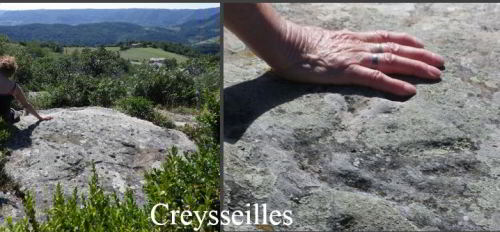 i.e.: @ Croix de Creyseilles (only 12 km from my
house),
i.e.: @ Croix de Creyseilles (only 12 km from my
house),
engraving is a tedious work !
To carve whole body icons sounds far
more rewarding
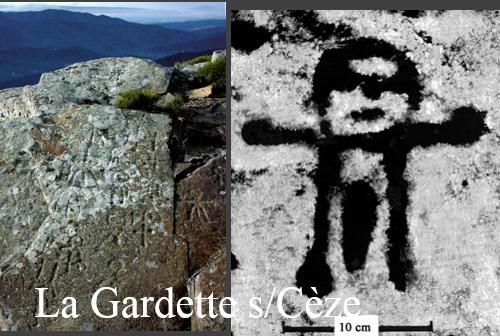
view of a
panel & tactigraphy of a detail
such as the ones on gneiss outcrops in
Ardèche.
Back

































































